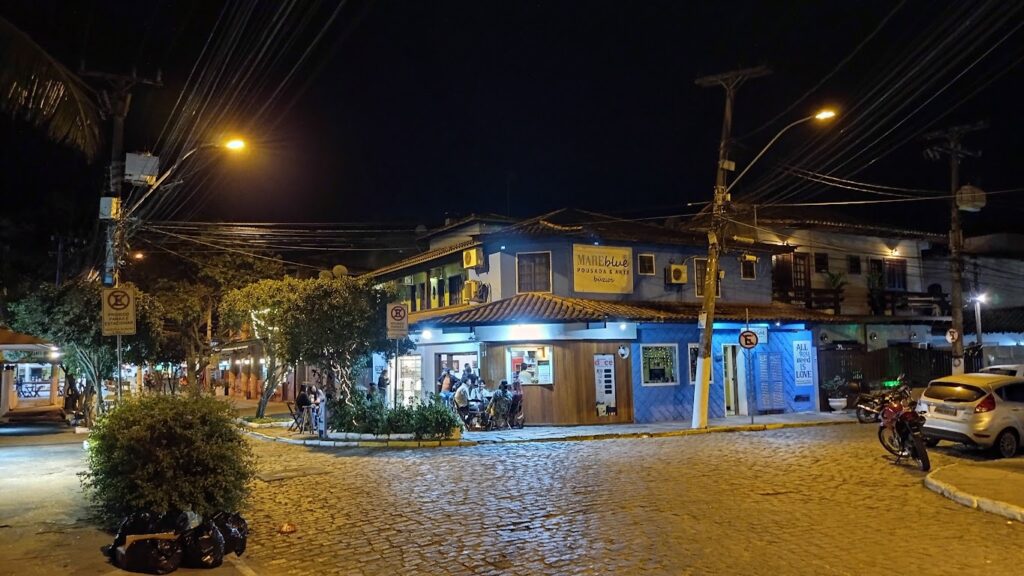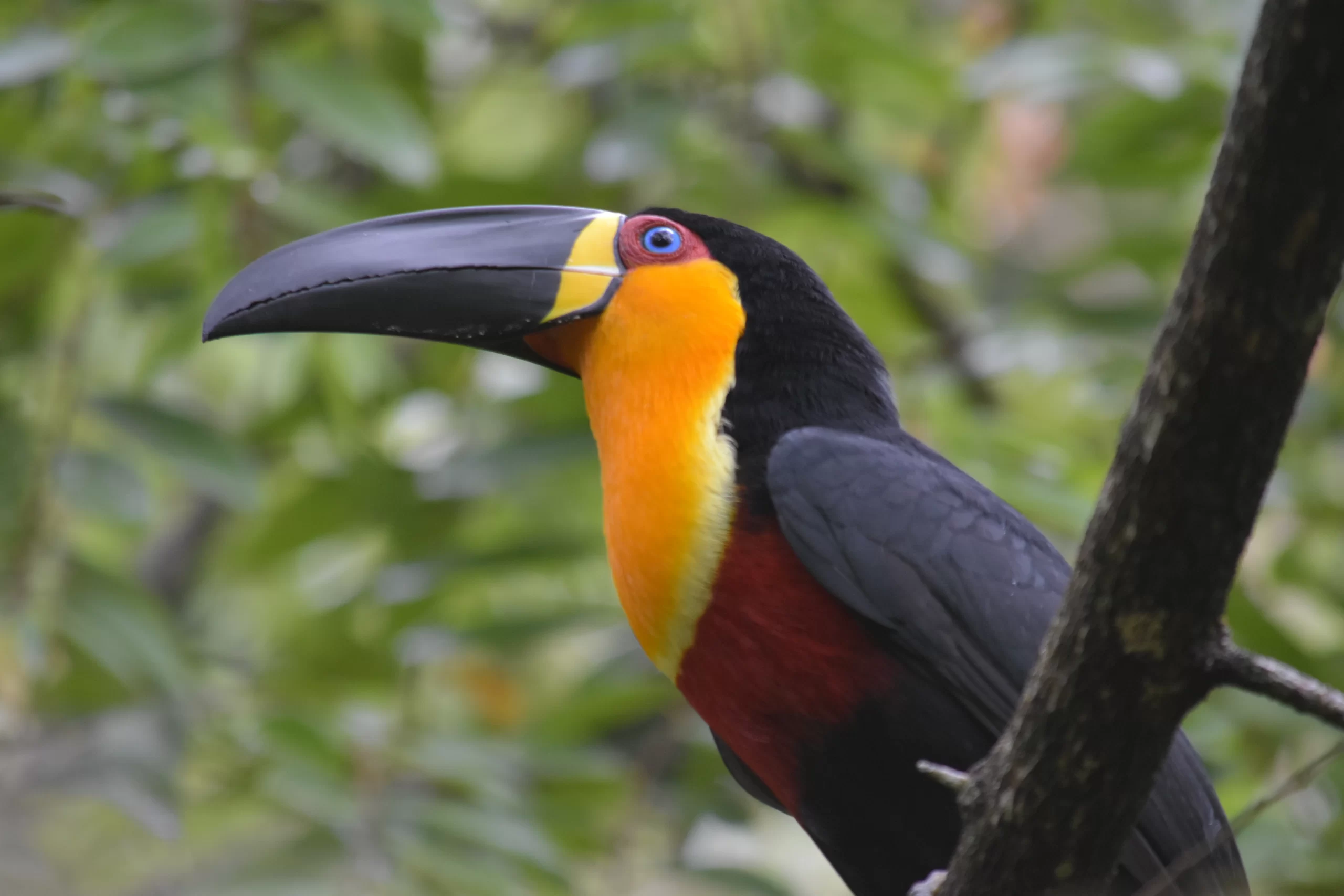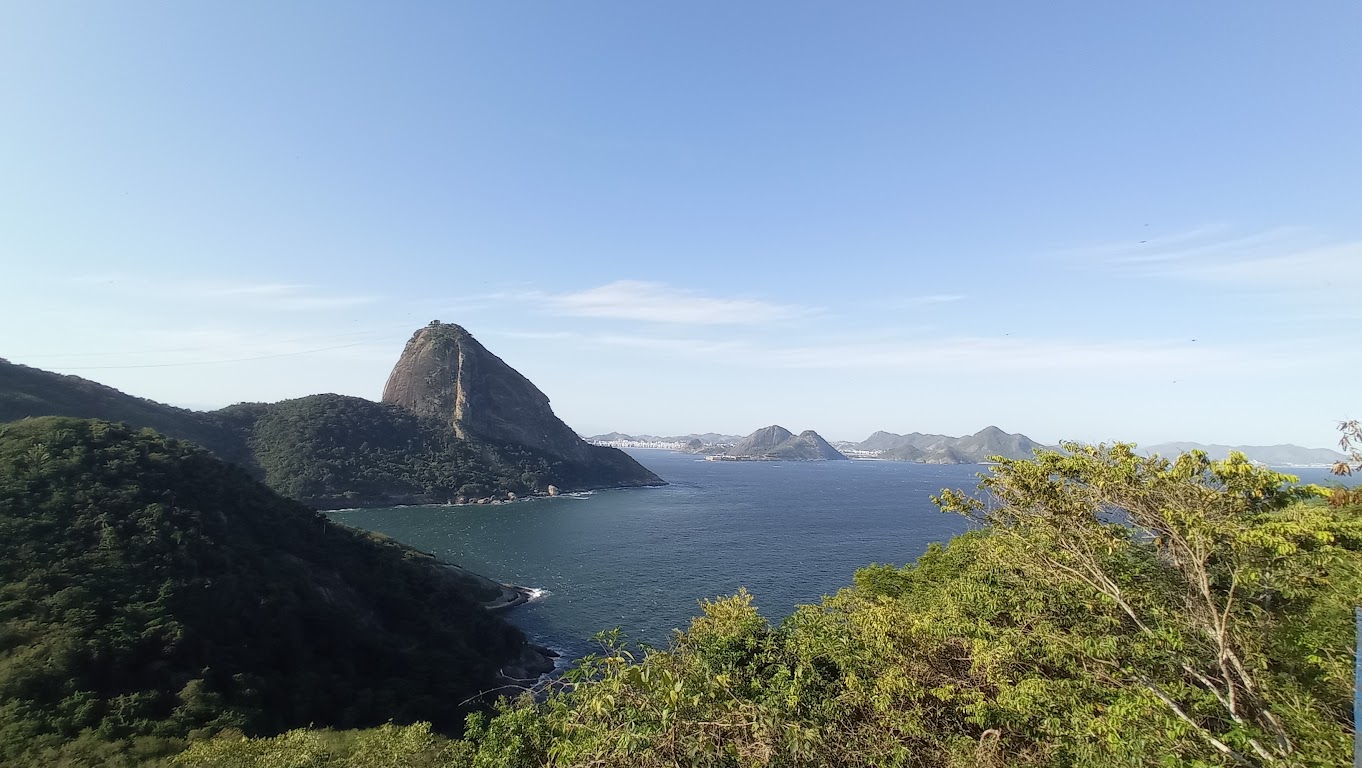Spotting Golden Lion Tamarins in Brazil
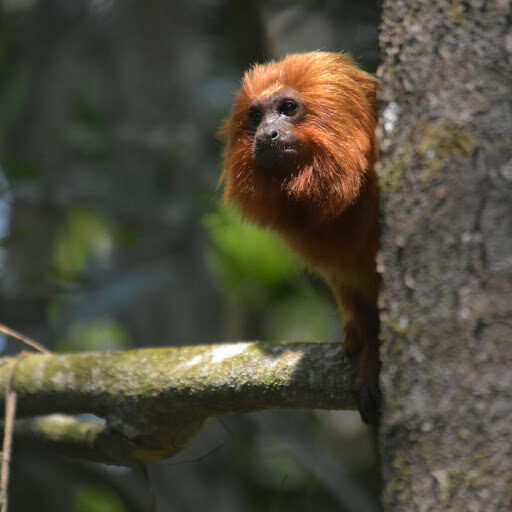
If primates were to hold a beauty contest, the golden lion tamarin would likely come out on top. It only inhabits certain tracts of forest in the eastern part of Rio de Janeiro state and was until recently at severe risk of extinction thanks to several causes: widespread deforestation, hunting for the illegal pet trade, competition from marmosets introduced from other parts of Brazil and yellow fever outbreaks.
Thanks to a conservation program, its numbers have recovered, and it has begun to recolonise certain areas – including, forests near the popular beach resorts of Buzios and Cabo Frio. Just an hour outside the former is a reserve dedicated to their conservation: Parque Municipal do Mico Leao Dourado (whose name translates to Golden Lion Tamarin Municipal Park). True to its namesake, there are several groups here that have become used to people, even though the park currently still only receives a trickle of visitors.
Quick fact about these monkeys: One features on the 20 reais note.

Visiting Parque Municipal do Mico Leao Dourado
Bidding the Uber driver a good one, I make my way towards the gate. I take in my surroundings, a cluster of bungalows around a lawn, and think to myself “OK, where do I get started”? I don’t have to wait long for an answer.
Almost immediately, I’m welcomed by a man who introduces himself as the manager and swiftly sets about getting one of the staff to show me around. His man Alejandro speaks bits and pieces of English, and my Portuguese has definitely come a long way after several months of Duolingo and watching clips from Speaking Brazilian, so communication doesn’t have too many hiccups.
He shows me around the project, which goes beyond just preserving the tamarins: they’ve got a hut full of hives in which live different species of stingless bees, a garden that grows various trees and orchids, a couple of rooms for anybody who wants to spend the night here and a large cage with a tree inside for rehabilitating injured animals. There’s nothing inside it for the time being, but there will be in due time: later in the day I’m shown a baby burrowing owl that the staff rescued and are currently nurturing back to health.
Once we’re done with this first bit of the tour, it’s time to head into the forest. At this point I’m introduced to their resident biologist Bianca, who leads the way. In the heat of the day, most of the animals are a little less active, but every now and then something pops up. A bright blue butterfly, a little hummingbird, a bunch of antwrens doing a mating dance… and then, as we round the corner, Bianca points to the left.
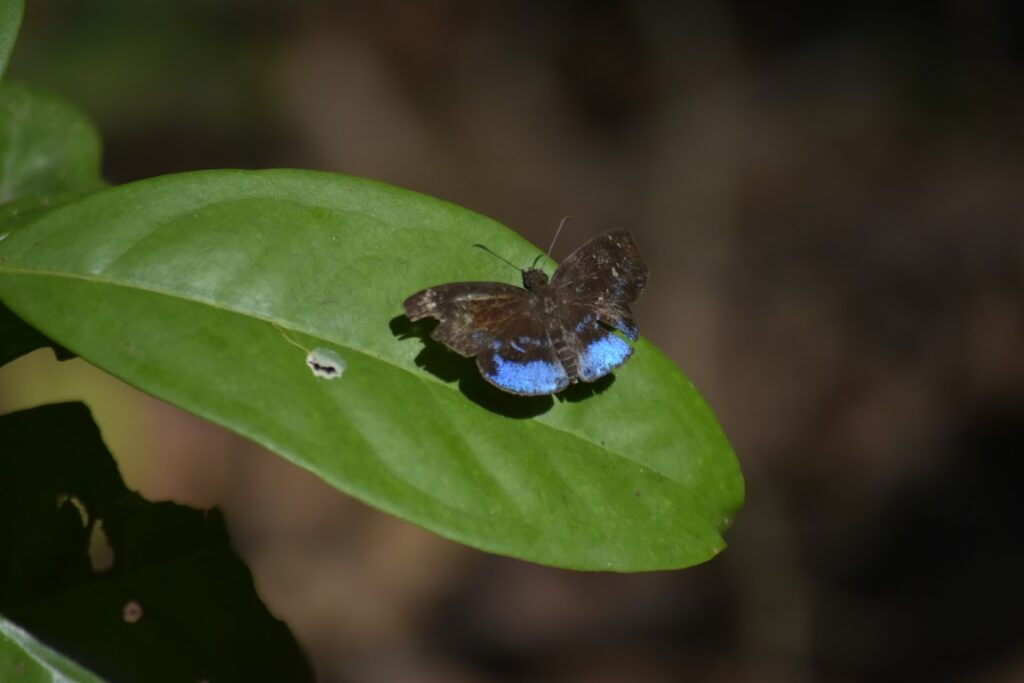
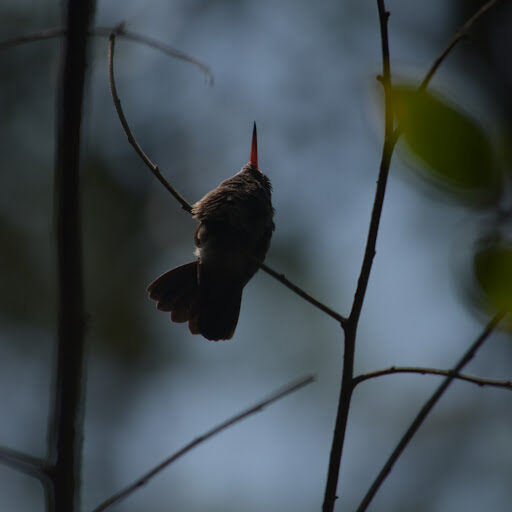
A golden lion tamarin appears.
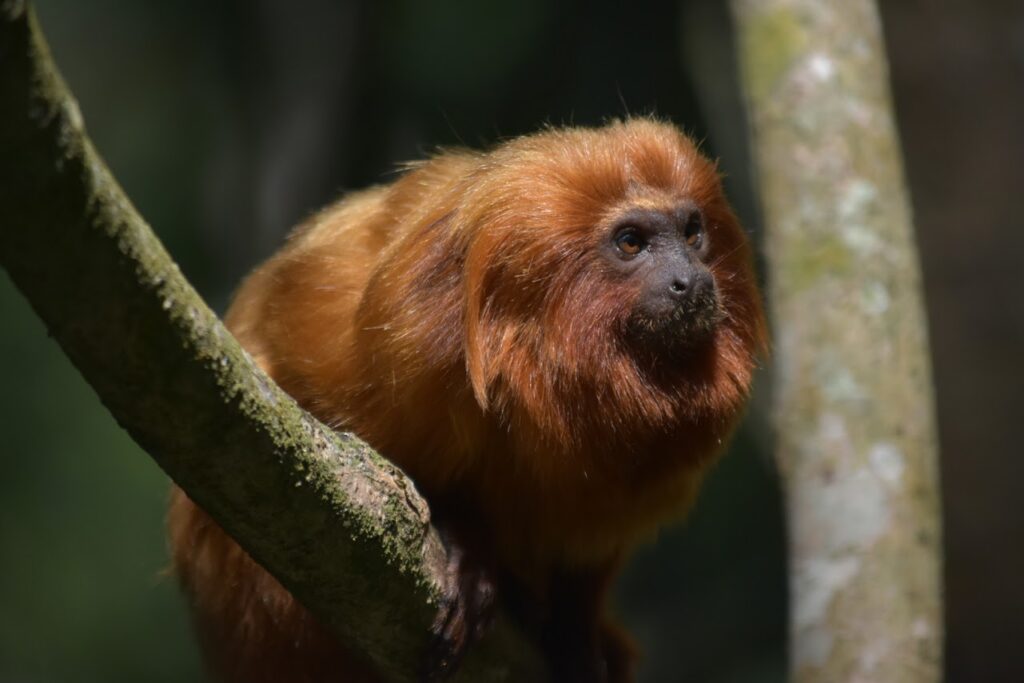
And then another.
They stare at us, beady-eyed, then start bounding from one trunk to another towards us until they’re within spitting distance – fortunately, neither I nor Curious George have any intention of following through with that. Their long fingers (yes, fingers) grasp the branches with ease, their long tails trailing behind them. And with a hairstyle like Chewbacca in a salon, it’s not hard to see where they got their name from.
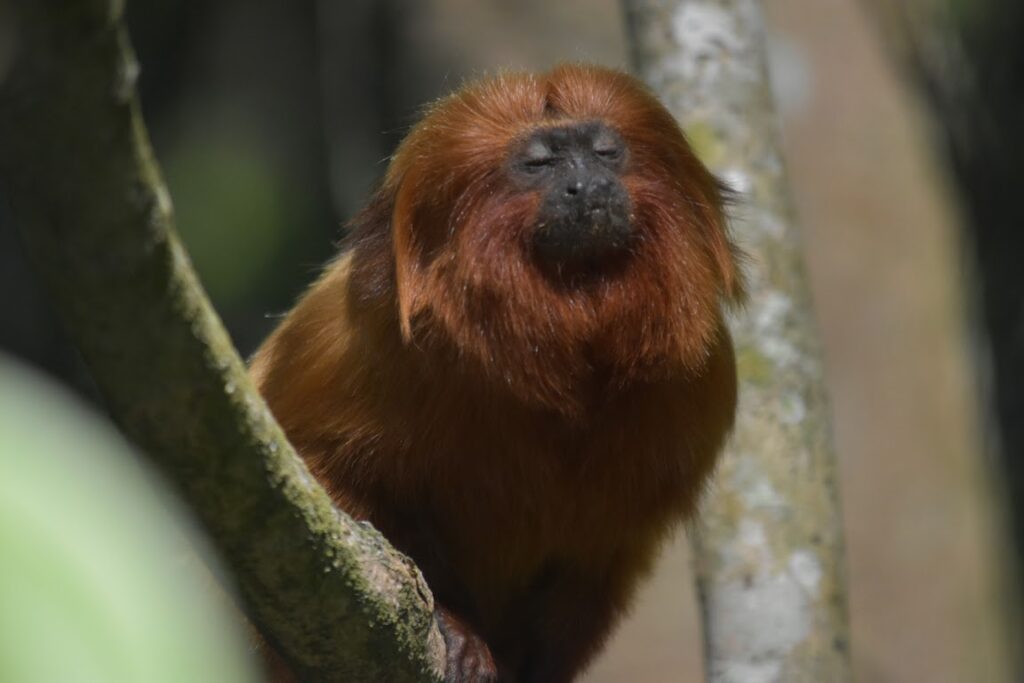
Photographing these beauties is made easy, thanks to the shade and how cooperative they are. Depending on the moment you click the shutter, one can capture some very animated facial expressions.
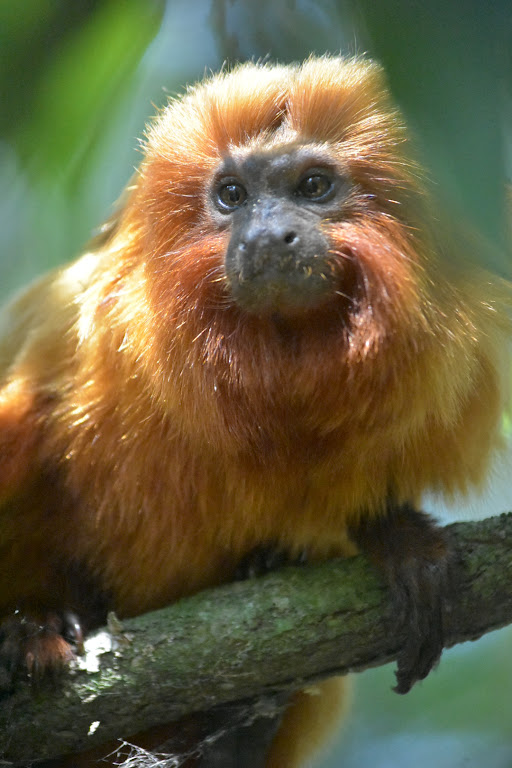
Eventually, they move off, and we continue. We arrive at a clearing: this one looks dry, barren and a little depressing – fitting, since this was caused by illegal logging. Unfortunately, the reserve still has problems from logging and poachers since the project is still a work-in-progress. It’s concerning news given how nonchalant the tamarins were about being right in front of us, but the uptick in visitors as this place gains popularity is steadily making the reserve better-equipped to deal with these problems.
Palm leaf crafts and heading back to Buzios
We pass by a house on a dirt road. It doubles up as a crafts shop, with the resident woman selling figurines made from palm leaves. It’s impressive stuff, though sadly I’m not able to take any since I’m travelling light and it would probably get squashed in my backpack. As we continue we spot more birds, and then another group of golden lion tamarins. Like the previous couple, these ones are just as inquisitive.
We get back to the visitor centre and, with a successful trip under my belt, I head back to Buzios. Between the buses and the Ubers and the visit itself, I’m back in town by lunch. After filling my stomach at one of the town’s many Argentinian empanada places, I’m met with a conundrum: which of the peninsula’s 26 beaches should I choose to get my tan topped up on?
How to get to Parque Municipal Mico Leao Dourado
PMMLD is roughly 42km from Buzios as the crow drives (you bet I’m making this expression a thing). Local buses can get you along the coast to a neighbourhood called Aquarius, from which it’s a roughly fifteen-minute Uber ride to the reserve itself. You could also Uber directly from Buzios, and there are a few car rental places within the resort too.
Whichever method you choose, there’s something very important to note if you’re using Google Maps or GPS to get there: it recognises a small forest trail as a road, one which won’t take you to the entrance. Instead, aim to approach the centre from the west.
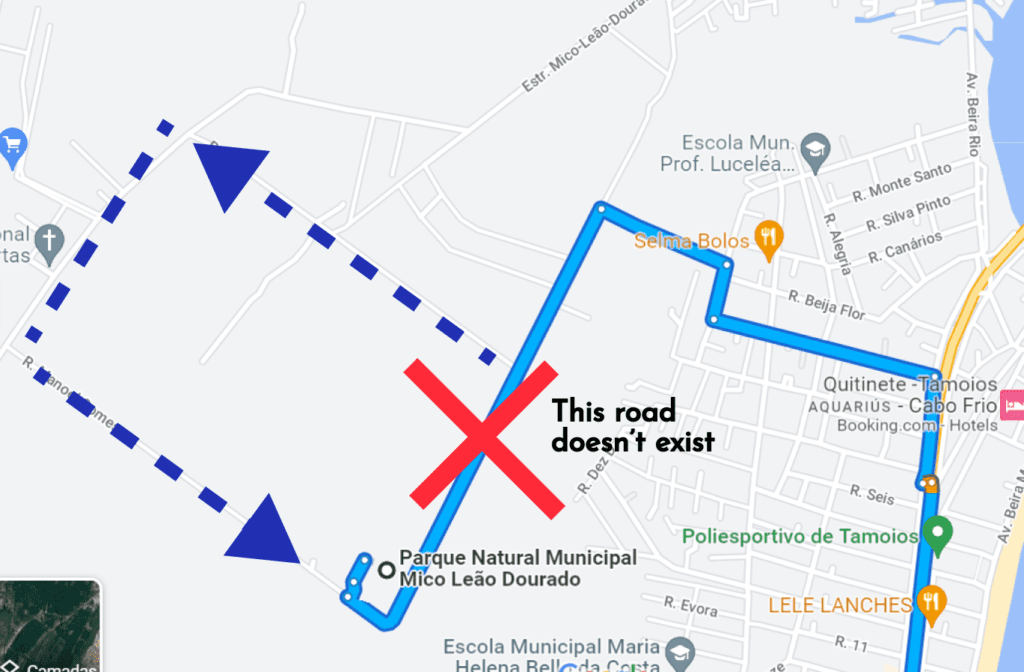
Getting to Buzios from Rio de Janeiro is easy enough, with multiple daily buses provided by Autoviacao 1001. They even have buses departing from Rio GIG Airport, so depending on the time you arrive you may be able to head directly there. It’s advisable to book your tickets in advance, especially if visiting on the weekend, since Buzios is quite popular with Cariocas (residents of Rio).
Other tips for visiting
Entrance is completely free, and the staff are very friendly – simply show up and they’ll keep you right. One very important thing to know is to bring along a pair of jeans or trousers – you’ll need them to go down the forest trails due to the threat of snakes or venomous spiders.
What to do in Buzios
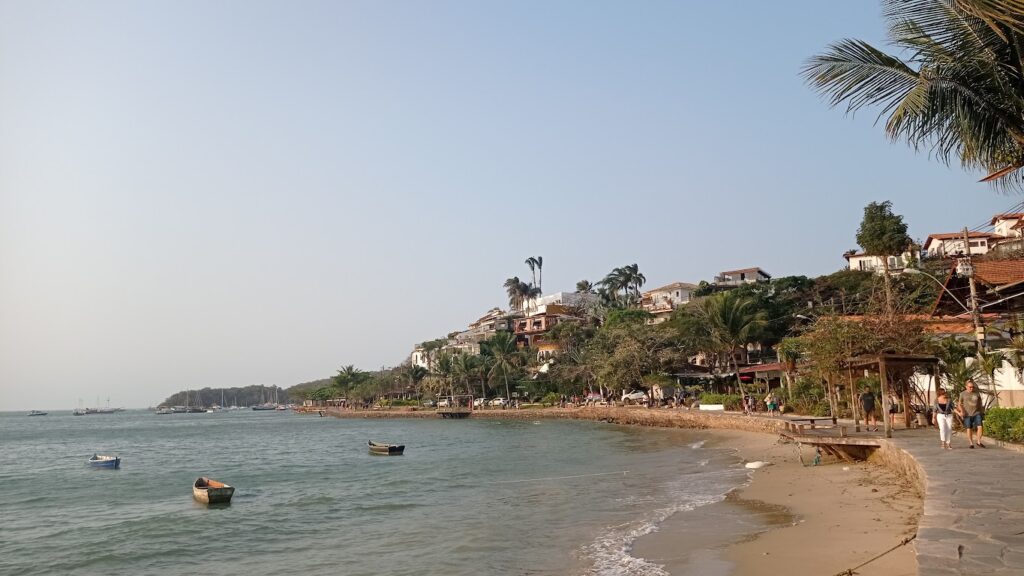
Buzios is the kind of place one goes to relax. Lie by the beach and do nothing, sit on one of the wee benches they have dotted all along the seafront or go for a stroll down the leafy cobblestone streets in a sunshine that feels gentle even at three. If you want to do a bit of sightseeing, Buzios has a few low-key landmarks: a small church, a few old colonial houses and a bunch of statues (including of French actress Brigitte Bardot, who gave this town its fame) dot the place.
On top of all this, Buzios is a world apart from Rio when it comes to safety. Wealth displays from middle-class Brazilians and foreigners are ostentatious, not a bit of Buzios has a dodgy vibe and the girl at my hostel even told me she regularly walks about alone at night.
Despite having a bit of a chic image, Buzios is not at all expensive to visit: there are several hostels in the area, most of which shouldn’t cost much more than a tenner a night, and just a few blocks away from the main street you’ll find local eateries and bars.
